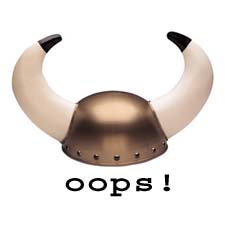|
FRESH STUFF DAILY |
|
|
||
|
|
||
|
|
||
|
SEE ALL SIGNED BOOKS by J. Dennis Robinson click here |
||
Page 1 of 3 For decades Hamptonians were convinced that the brother of the most famous Viking explorer in history had died on their shores. They had his tombstone, after all. How did they know? Well the stone was covered with ancient writing. But experts now say that Thorvald’s Rock is clearly – well – just a rock.
Sorry folks, Thorvald's Rock in Hampton is a fake. The famous old rock never marked the grave of Thorvald, brother of the famous Viking explorer Leif Eriksson and son of Erik the Red. For a century local historians and reporters tiptoed around the truth. I'm compelled to be a little bolder -- and simply call a stone a stone. One good hoax, however, can often tell us more about human nature than a boatload of facts.The rock sits today on the campus of Hampton's Tuck Museum, just across the street from a lot more rocks in Founder's Park. It is encased in a concrete well beneath a row of iron bars to protect the famous stone from pickaxe-wielding tourists in search of a souvenir. Like Plymouth Rock, Thorvald’s Rock is just a stone that, although not part of any real historic event, has become a symbol all the same. The faint gouges on the surface of the stone were once considered Viking runes. Early in the 20th century some "historian" determined that they are letters from the Viking alphabet. That report made its way into a lot of tourist brochures, books and magazine articles. Since then most scholars say the theory that Thorvald was buried near Boar's Head, New Hampshire in 1004 AD is hogwash. Legends, however, attract much more ink while Truth has a lousy press agent. Scholars almost universally agree that Vikings were the first Europeans to colonize North America, a place they called Vinland. They traveled in open boats with a central blazing fire pit, livestock and dozens of oarsmen through impossible seas. From Russia to Great Britain, past Iceland and Greenland they came. Exactly where in America they landed is the question. Vinland, researchers tell us, was likely Nova Scotia, maybe Quebec and as far south as New York City. That's likely how Hampton district court judge Charles A. Lamprey felt when, as a child, he heard stirring tales of brave and ferocious Vikings. The legend of Thorvald especially intrigued him. According to the saga, Thorvald was retracing his brother's discovery of Vinland when he found a stunning rock outcropping that reminded him of the fiords back home. Those rocks, Lamprey reasoned, must be Boar's Head New Hampshire, not far from Hampton Beach. According to the saga, Thorvald and his men came ashore and found three canoes owned by "skerlings" or Native Americans. The Vikings slaughtered eight Indians, then were pursued back to their longboat. In the ensuing sea battle, Thorvald took an arrow in the armpit and, dying, requested to be buried ashore with a cross at his head and a cross at his feet. Watch closely now, because this is how local legends are born. Without a shred of proof, other publications picked up the tale of the Hampton judge's Norse Boulder. A developer wanted to build a park around the rock and charge admission to the growing number of Hampton Beach tourists. New housing cropped up on what is now Thorvald Ave., just shy of Viking Road. Seacoast real estate prices began to climb. Hampton's "rock star" got a public relations boost in the mid-Thirties when a group of local citizens decided to do a little amateur excavation. According to local legend as later reported in the Hampton Union, the diggers were about to unearth the boulder. Suddenly a bolt of lightning struck the rock, "wrenching the tools from the volunteers' hands and causing a general retreat." Nothing enhances a Viking legend like a bolt of lightning. CONTINUE legend of HAMPTON VIKING
Please visit these SeacoastNH.com ad partners.
News about Portsmouth from Fosters.com |
| Tuesday, April 23, 2024 |


|
Copyright ® 1996-2020 SeacoastNH.com. All rights reserved. Privacy Statement
Site maintained by ad-cetera graphics

 HISTORY
HISTORY






















